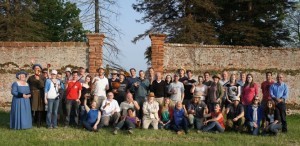Suzannah Lipscomb's Blog, page 19
September 14, 2012
A Tudor historian’s view of the Richard III excavations
I’ve written a blog for BBC History Magazine on the excavations of a skeleton which may belong to English king, Richard III:
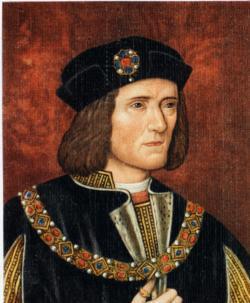
It is not surprising that for centuries Richard III has been synonymous with evil tyranny and physical deformity. To argue otherwise has been to take on three of history’s greats – Sir Thomas More, William Shakespeare and Winston Churchill, all of whom argued that Richard had been a man with a crooked back and a crooked life.
Although we’re all familiar with Shakespeare’s powerful evocation – in which Richard III is a hellish villain with a mind as warped as his body – the Tudor tradition of portraying the last Plantagenet king as a monster went much further back.
Shakespeare followed the account by Raphael Holinshed, who in turn echoed Polydore Vergil and Thomas More. Vergil, in a work commissioned by Henry VII and probably finished by 1513, depicted Richard as a cruel tyrant. More, meanwhile, writing in 1514-18 (self-consciously modelling his History on Tacitus’s treatment of Tiberius) described Richard as ‘little of stature, ill fetured of limmes, croke backed, his left shoulder much higher then his right’.
To More, Richard’s physical deformities revealed his monstrous character and reflected a life of acts ‘unnaturallye committed’.
Both Vergil and More had made use of older accounts, such as that by John Rous, in circulation soon after Richard’s death and newly scrubbed up for the Tudor dynasty to blacken Richard’s name. (Rous even records that Richard unnaturally gestated for two years’ in his mother’s womb before being born breech, with both teeth and flowing hair.)
Pictorial depictions too were on the receiving end of obvious post-1485 doctoring, as Pamela Tudor-Craig has concluded of this image in the Royal Collection.
But, the problem until now – and the reason Shakespeare has been largely unchallenged – has been that this evidence cannot convincingly tell us whether the accounts and depictions dating from Richard’s lifetime were accurate records by eyewitnesses, later changed by the Tudors to make Richard more sinister and villainous, or, flattering descriptions written when Richard was alive, with the truth only emerging after his death.
DNA-tested bones can, and that is why the skeleton that may belong to Richard III is so very important.
So far, the media has excitedly revealed that the skeleton ‘reveals a hunchback king’. This is inaccurate in more than one way, but if the skeleton does turn out to be that of Richard III, it can potentially reveal to us several crucial facts:
• Whether Richard had scoliosis – a type of spinal curvature – or kyphosis – the hunchback that Shakespeare gives him. There’s a distinct difference between the two. The former would have made one shoulder higher than the other, as More attested, and may also have made one shoulder blade prominent.
• How this might have affected both Richard’s appearance and his physical abilities. There’s always been a tension between Richard III’s renowned skill on the battlefield and the supposed extremity of his deformities.
• How exactly Richard died. The king’s martial prowess and the fact that he came within feet of Henry Tudor, whom he could easily have bested in one-to-one combat (no one would have put odds on the chance of a Tudor victory in 1485), mean that the only real way to explain his demise at Bosworth was that he was attacked from behind, as the skeleton initially seems to suggest.
But, finally and crucially, if the skeleton does turn out to be that of Richard III, it will hopefully prompt us to reassess not only Richard himself – we’re thankfully beyond seeing physical disability as some sort of evidence of a twisted soul – but the reputations of both Shakespeare and, especially, More.
Should we conclude that the sainted More, a man of integrity who died a martyr rather than swear against his conscience, was a liar? That can of worms may be even more controversial than the story of Richard III himself.
August 15, 2012
Wellcome History
 I’ve told you much about our innovative project working with actors with learning difficulties at Hampton Court Palace (see here), but here’s a little more: the Wellcome Trust – which funded the performances through a People Award – has featured an article I wrote about the project in the latest issue of Wellcome History magazine. Also don’t miss the piece by Penny Lepisz, one of the actors who performed as a ‘King’s fool’ (though the picture next to her doesn’t show her leading the troops but actor Maude Winkler Reid). You can also learn from Lucy Worsley about the other ways that Historic Royal Palaces has worked with the Wellcome Trust.
I’ve told you much about our innovative project working with actors with learning difficulties at Hampton Court Palace (see here), but here’s a little more: the Wellcome Trust – which funded the performances through a People Award – has featured an article I wrote about the project in the latest issue of Wellcome History magazine. Also don’t miss the piece by Penny Lepisz, one of the actors who performed as a ‘King’s fool’ (though the picture next to her doesn’t show her leading the troops but actor Maude Winkler Reid). You can also learn from Lucy Worsley about the other ways that Historic Royal Palaces has worked with the Wellcome Trust.
August 6, 2012
1536 – the new cover
My first book, 1536: The Year that Changed Henry VIII, is being reprinted in a brand new paperback edition, complete with new cover:
Do you like it? It’ll be out in October.
August 1, 2012
Time Team Reflections
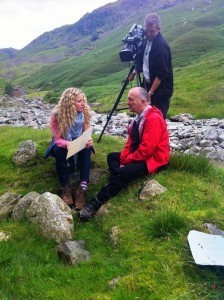 Over this summer, I’ve been the contributing historian on four Time Team programmes, which I’ve told you about before (see more photos and videos here), but I haven’t before commented much on the process.
Over this summer, I’ve been the contributing historian on four Time Team programmes, which I’ve told you about before (see more photos and videos here), but I haven’t before commented much on the process.
Three of the sites I worked on were Tudor – houses owned by Cardinal Thomas Wolsey near Watford and Charles Brandon, duke of Suffolk at Henham Park, and the third, a copper mine in the Lake District that was started under Elizabeth I – and one was Norman – an Anglo-Norman castle in Pembrokeshire.
The experience has been exceptionally enjoyable.
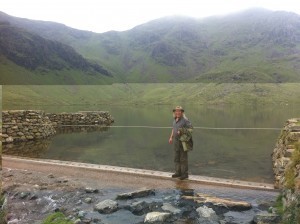
The Time Team crowd is a good one, full of experienced and professional people with deep and thorough expertise – be it in archaeology, ceramics, metalwork, production or presenting. I have learnt much from their example, and benefited from their generous friendship.
There is also a very high level of research behind each shoot: what you see on screen is the iceberg.
To give you an example: on the last shoot – the Elizabethan copper mines at Coniston – I prepared myself by reading around the subject and was sent, before filming, a pack of extra articles and documents to bring myself up to speed on the niceties of early modern mining.
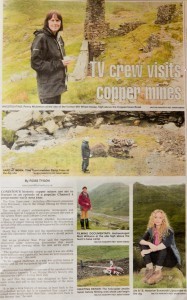
But, on top of this, on location, researcher Celyn Williams and I worked through photographs of the sixteenth- and seventeenth-century manuscripts of (among others):
the charter creating the Company of Mines Royal in the name of Queen Elizabeth I
surveys commissioned by Elizabeth I
letters written by the German miner who founded the mines, Daniel Hoeckstetter
parish registers for 1590-1620
This was genuine historical research, and the fruits of it – and not all the hard graft behind the scenes – is what appears on screen: historical research complementing the archaeological discovery unfolding over the three days. The two together brought results that were surprising and salutary, and it was very rewarding to have been a part of uncovering this history. Hopefully you too will find it all as enjoyable to watch.
The new series will air in early 2013.
July 2, 2012
New showreel
I’m delighted to present to you a cornucopia of clips from my recent TV projects, mentioning everything from corsets and A levels, to incest and disembowelling.
June 29, 2012
“Sixteenth-century girl’s love for Tudor Suffolk”
Steven Russell interviewed me for today’s East Anglian Daily Times about why history is the new rock ‘n’ roll:
I wish Henham Park were my second home!
June 9, 2012
The Book Show Royal Special
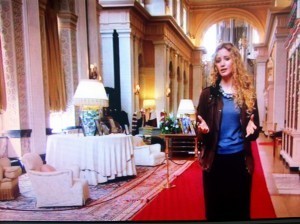 It was a real treat to spend a morning filming at Blenheim Palace, the setting of films like Young Victoria, for The Book Show Royal Special. The film aired just before the Diamond Jubilee celebrations, on 31 May 3012 (and is still, at the time of writing, available on Sky On Demand).
It was a real treat to spend a morning filming at Blenheim Palace, the setting of films like Young Victoria, for The Book Show Royal Special. The film aired just before the Diamond Jubilee celebrations, on 31 May 3012 (and is still, at the time of writing, available on Sky On Demand).
I was discussing representations of the royalty on screen and page. How have films and novels shaped our ideas of the royalty? If, as I suspect, quite a lot, do they have a responsibility to be accurate? Does it matter if they’re not?
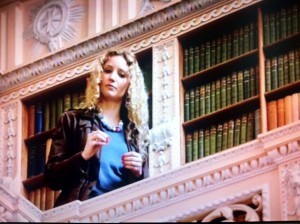
An illustrious panel, made up of historians Andrew Roberts, Kate Williams and Andrew Marr, along with The Book Show host Mariella Frostrup, went on to discuss these issues in greater depth.
It was particularly nice to discover that the Handel’s grand Zadok the Priest was my musical accompaniment.
June 4, 2012
Thames Jubilee Pageant
It was a pleasure and a privilege to spend Sunday 3 June 2012 commentating on the Thames Jubilee River Pageant.

I spent the morning on BBC Radio 5 Live as a presenter’s friend to Jane Garvey and Sam Walker, on location in Battersea Park, to discuss what it means to be British, and how it has changed in the last 60 years.
Then in the afternoon, I joined James Whale on LBC 97.3FM for four hours at Westminster Tower, from where we had a bird’s eye view on the unfolding river pageant.

From our perspective, the continual wall of boats, against the backdrop of the Palace of Westminster, looked like a modern-day Canaletto.
June 2, 2012
Time Team
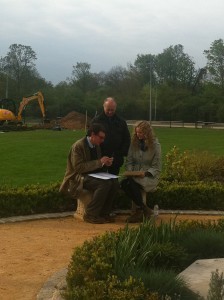
In the last month, I’ve had tremendous fun being part of two Time Team digs in Suffolk and Hertfordshire. We’ve been searching for lost Tudor manor houses, one belonging to Cardinal Thomas Wolsey and one to Charles Brandon, duke of Suffolk.
I made a couple of little videos for the Time Team blog.
I’m looking forward to joining the Team again later in the year!
May 31, 2012
Finding the Tudors in East Anglia
My interview with Eastern Daily Press was published on Monday 28 June. I’m pictured at Blickling Hall in Norfolk at the Blickling Boleyn Festival. Includes my top ten Tudor sites in East Anglia!



